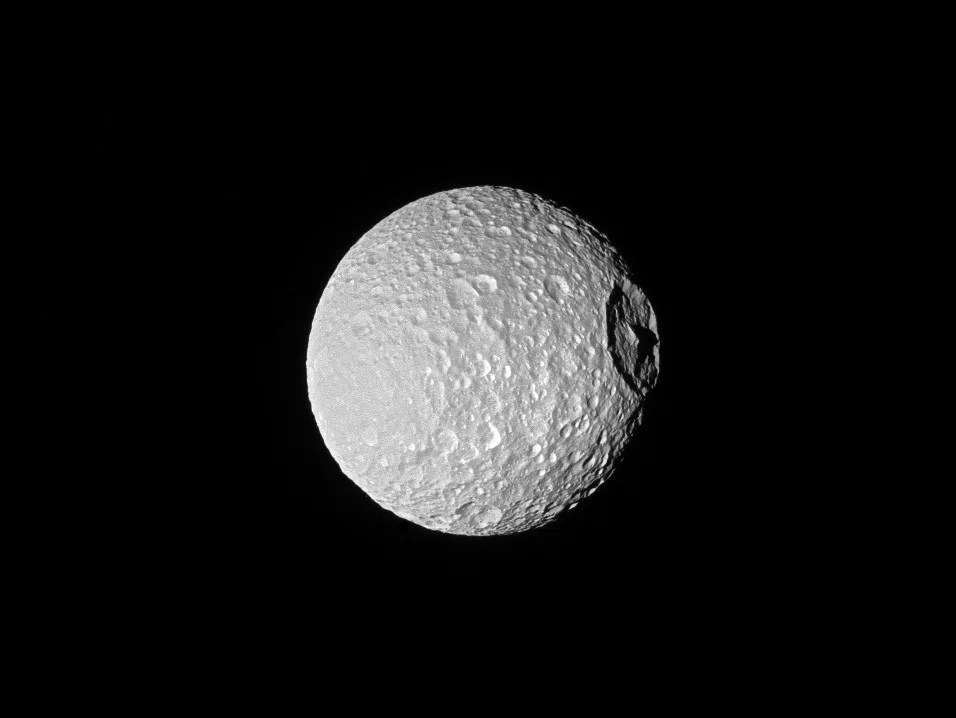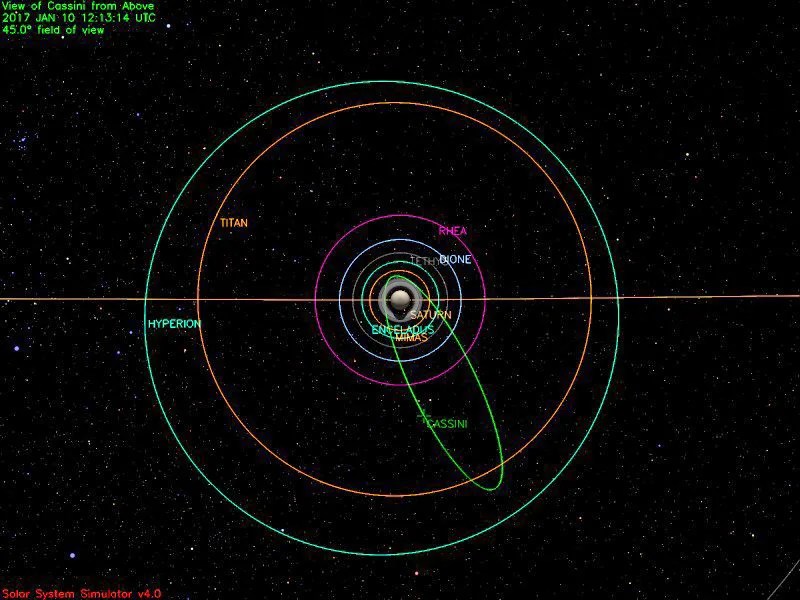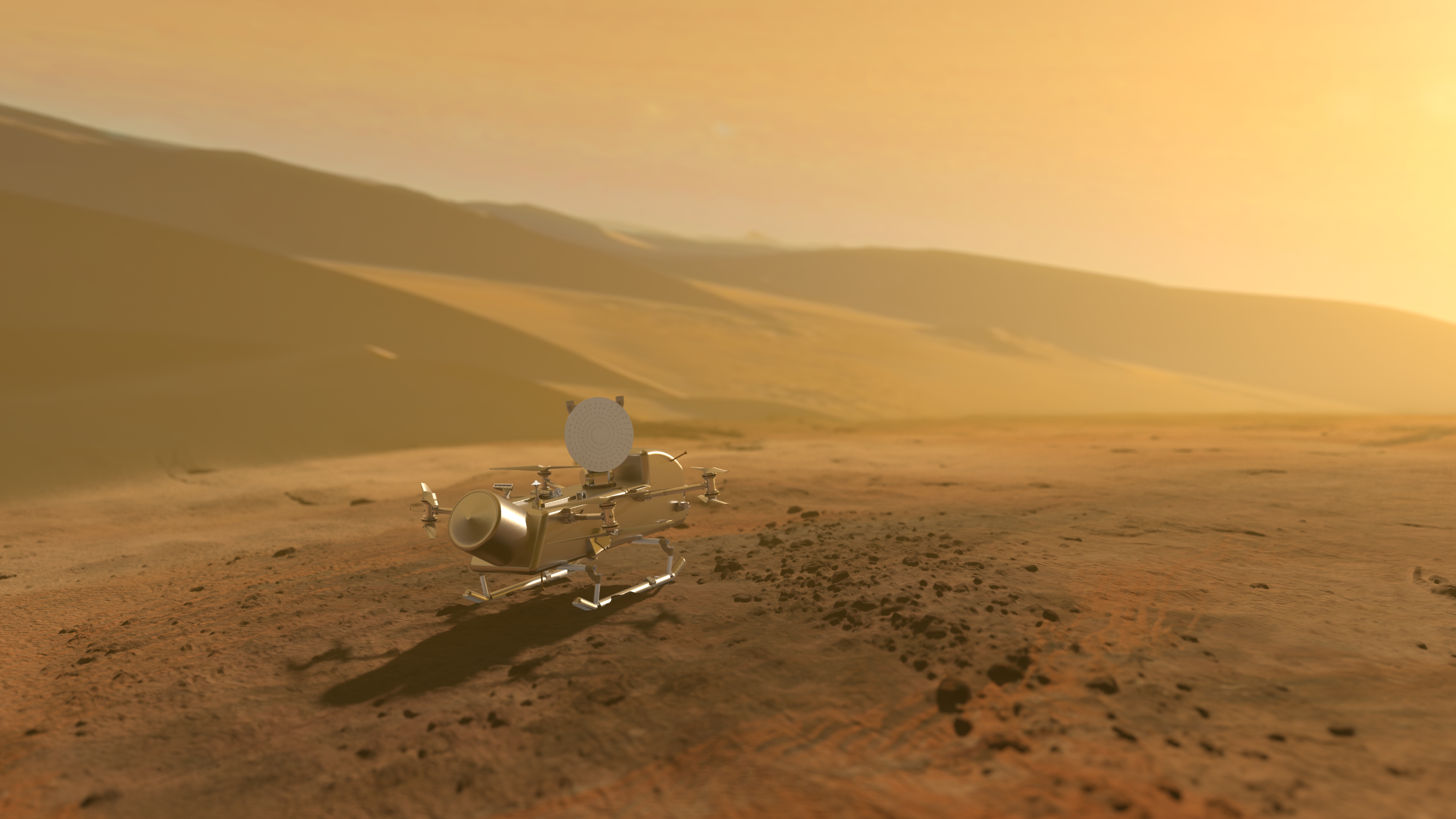6 min read

Cassini completed another ring grazing orbit of Saturn this week, orbit #255 since arriving at Saturn over 12.5 years ago. On Monday, the spacecraft crossed southward at high speed through the ring plane, just outside Saturn's ever-changing F ring for the sixth time. This time, in addition to a whole set of telescopic, remote-sensing observations by the optical instruments, the passage included an important direct-sensing measurement. The Ion and Neutral Mass Spectrometer (INMS) took advantage of the spacecraft's close proximity to the dusty F ring, and it was pointed in such a way that it could collect stray ring particles for analysis. Such in-situ sampling is a powerful technique that is complementary to the ubiquitous optical observations; being able to “taste” F ring particles is an exciting new opportunity afforded by the F-ring orbits.
Wednesday, Jan. 4 (DOY 004)
Cassini's Composite Infrared Spectrometer (CIRS) observed Saturn's F ring for nearly 10 hours to look for variations in properties among the rings' dust grains. Next, the Imaging Science Subsystem (ISS) took control of pointing for 7.7 hours to observe the faint G ring and E ring, and create a general map. CIRS and the Visible and Infrared Mapping Spectrometer (VIMS) rode along.
Thursday, Jan. 5 (DOY 005)
CIRS resumed its study of the F ring for nearly 10 hours again today. This observation, combined with the one from the previous day, allowed CIRS to observe the ring’s full azimuth, simply by letting it revolve through its field of view.
Cassini passed through apoapsis today, completing orbit #255 and beginning #256.
Friday, Jan. 6 (DOY 006)
This week's featured image provides an extraordinarily clear view of that huge crater on Saturn's little round moon Mimas: /resources/17581 .
Saturday, Jan. 7 (DOY 007)
The red star VY Canis Majoris was occulted by Saturn's rings today, thanks to the spacecraft's motion in orbit. VIMS observed this occultation as the star slipped behind Saturn's A ring, the Cassini Division, and the outer portion of the B ring.
CIRS spent the next six hours examining Saturn's broad A ring, to refine constraints on its composition and structure. ISS then tracked the narrow F ring for 15.7 hours, a little more than one full revolution of its particles about Saturn. CIRS and VIMS rode along. ISS's results will be combined into a movie to investigate this unique ring's dynamics.
Sunday, Jan. 8 (DOY 008)
ISS took 50 minutes to monitor a subset of small satellites near Saturn to refine knowledge of their orbital parameters, which is key to understanding their dynamical evolution. CIRS rode along. Finally today, ISS and CIRS spent 48 minutes re-targeting propeller-like features in the rings.
Monday, Jan. 9 (DOY 009)
The Ultraviolet Imaging Spectrograph (UVIS) took the reins for one hour today to track the bright blue star system Alpha Crucis while it passed behind the dawn side of Saturn's limb. Atmospheric occultations of ultraviolet-bright stars such as this allow atmospheric scientists to probe Saturn's upper atmosphere and measure, for example, how its density varies with height in the atmosphere.
When the stellar occultation finished, ISS turned to revisit Saturn's B and C rings for two hours, making high-resolution color images of regions where there are known color variations. CIRS and VIMS rode along. Next, UVIS led a 2.5-hour observation targeting the sunlit side of Saturn's A ring, with CIRS riding along, to obtain high spatial- and spectral-resolution data. These data will inform photometric models of the ring, and make inferences about the particles' composition. ISS then spent 2.3 hours doing a high-resolution radial scan of the sunlit A ring and outer B ring to map out fine-scale features. CIRS, UVIS, and VIMS all rode along.
As Cassini crossed the ring plane just outside the F ring, INMS pointed for 2.2 hours in the direction from which particles loosely associated with the ring were expected to arrive. Before the observation was done, Cassini sped through periapsis in its orbit #256 of Saturn.
UVIS targeted the auroral oval surrounding the planet's south pole for four hours, with CIRS riding along. Next, CIRS pointed to the unlit side of the A ring for six hours to look for the signature of "halo" structures associated with strong dynamical resonances, such as the Janus 5:4 resonance.
Closing out the day's science activities, ISS and CIRS spent four hours observing. First, they targeted the region spanning the edge of the A ring out to, and including, the F ring. Finally, they examined the clumpy arc in Saturn's G ring, which is the next faint ring outward.
Tuesday, Jan. 10 (DOY 010)
The Radio Science team carried out another occultation experiment using three different-frequency radio beams, very much like last week's. As Saturn and then Saturn's rings occulted the spacecraft, the variations in its continuous signals were recorded on Earth to allow scientists to make inferences about the nature of Saturn's atmosphere and ring system. Ever since Cassini's Ultra-stable Oscillator (USO) failed in late 2011, Radio Science occultation experiments such as today's depend on a continuous reference signal sent up from the Deep Space Network (DSN).
Following the Radio Science experiment, VIMS observed the occultation of the bright red star Alpha Orionis, commonly known as Betelgeuse, as it passed behind Saturn's A ring, Cassini Division, and outer B ring. The relatively low elevation angle helped map some of the less optically thick parts of the rings.
The DSN communicated with and tracked Cassini on 10 occasions this week, using stations in Spain, California, and Australia; an ESA station also participated one time from Australia. A total of 5,990 individual commands were uplinked, and about 1,300 megabytes of telemetry data were downlinked and captured at rates as high as 99,541 bits per second. Upwards of 50,000 megabytes of Radio Science data were recorded on the ground.
Wrap up:
Cassini is executing its set of F-ring-grazing orbits of Saturn, with a period of 7.2 days in a plane inclined 63.7 degrees from the planet's equatorial plane. The 20 orbits are nearly identical, with Cassini's nearest point at about 150,000 km, and furthest point at about 1.28 million km from Saturn. Speeds relative to Saturn at those points (periapsis and apoapsis), are close to 76,150 km per hour and 9,000 km/h respectively.
The most recent spacecraft tracking and telemetry data were obtained on Jan. 11, using the 70-meter diameter DSN station in California. The spacecraft continues to be in an excellent state of health with all of its subsystems operating normally except for the instrument issues described at http://saturn.jpl.nasa.gov/anomalies.
The countdown clock in Mission Control shows 247 days until the end of the mission.








